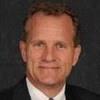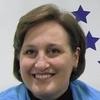Explore all the information on
Feedstuffs
Welcome to the page about Feedstuffs of Engormix; a source of knowledge on Feedstuffs.
Join Ryan Standard, Regional Managing Editor Americas at Fastmarkets, as he analyzes the international trade of animal proteins. This presentation at the International Rendering Symposium 2025 explores market dynamics and key factors influencing global protein markets....
Comments : 0
Recommendations: 0
Nelson Ruiz (Nelson Ruiz Nutrition, LLC) shares an overview of his research on KOH solubility, trypsin inhibitors, and over and underprocessing in this Engormix interview during IPPE 2025 in Atlanta, USA....
Comments : 0
Recommendations: 0
1. Introduction The current global challenge of achieving food security and ensuring access to sufficient, nutritious, and safe food for all while maintaining or improving agricultural sustainability has been presented in the United Nations’ Sustainable Development Goals (SDGs), particularly Goal 2, which refers to Zero Hunger. This goal emphasizes the necessity to end hunger while achieving food security through improved nutrition and promote sustainable agricultural practices...
Comments : 0
Recommendations: 0
INTRODUCTION The United States is the largest producer of beef in the world, with over 11 million head of beef cattle in feedlots at any given time (as of May 2020; USDA, 2020). Corn is one of the most important ingredients in feedlot cattle diets because it is in expensive and energy dense. Mechanical processing of corn has been used in the feedlot industry for decades to increase starch digestibility, and, conse quently, improve growth performance and carcass characteristics...
Comments : 0
Recommendations: 1
.jpg&w=3840&q=75)

The Circular Bioeconomy and its impact on Feed Ingredients
Suggested link
James Wen (Evonik Animal Nutrition) discusses the 2024 Feeding Reading Report, highlighting nutrient variations across U.S. feed ingredients and the importance of quality control for nutritionists. The report helps producers optimize feed efficiency, reduce waste, and improve sustainability. ...
Comments : 0
Recommendations: 1
Jim Sutter (U.S. Soybean Export Council) talks about the benefits of US soybeans, understanding value, and offering choices, in this Engormix interview during IPPE 2025 in Atlanta, USA....
Comments : 0
Recommendations: 0
Roberta Simpson-Dolbeare (American Soybean Association) shares her family's farm history and expertise, as well as her insights on exporting soybeans, in this Engormix interview during IPPE 2025 in Atlanta, USA....
Comments : 0
Recommendations: 0
Constance Cullman (AFIA) discusses feed ingredients regulations and food safety among AFIA's goals this year, in this Engormix interview during IPPE 2025 in Atlanta, USA....
Comments : 0
Recommendations: 0
.jpg&w=3840&q=75)

The Circular Bioeconomy and its impact on Feed Ingredients
Suggested link
Lara Moody (IFEEDER) shares her insights regarding inclusion rates and circularity of ingredients in this Engormix interview during IPPE 2025 in Atlanta, USA....
Comments : 0
Recommendations: 0
Scientists have looked at mycotoxin issues in the cereals sector in Ireland to help better protect consumers.
Ireland is an important producer of oats and barley. While some of the output is used as animal feed, a significant proportion is used in the food and beverage industries.
Chris Elliott, an ex-professor of Food Safety at the Institute for Global Food Security at Queen’s University Belfast, and a team of researchers have undertaken the work. It looked at the...
Comments : 0
Recommendations: 0
Introduction Corn processing plays a pivotal role in the bioethanol industry, utilizing both wet and dry methods to extract valuable components from corn. Understanding the strengths and weaknesses of each approach is essential for producers aiming to optimize efficiency and product quality, particularly in the production of Distillers Dried Grains with Solubles (DDGS). In this article, we explore the two processing methods, their implications for DDGS production, and the...
Comments : 0
Recommendations: 1
In feed formulation, Six Sigma methodology helps achieve high-quality standards by minimizing variability. Applying it to ingredients like maize and soybean meal allows us to control nutrient content precisely, ensuring consistency in feed quality. A bell curve (normal distribution) visually represents the variability in a nutrient (like crude protein, CP) and helps identify a target range that can maximize feed efficiency while minimizing risks of nutrient excess or deficiency. #...
Comments : 0
Recommendations: 3
.jpg&w=3840&q=75)

The Circular Bioeconomy and its impact on Feed Ingredients
Suggested link
A growing population that we have to feed, by 2050 approximately 9 billion inhabitants. Climate change, global warming, atmospheric phenomena (hurricanes, floods, prolonged drought that drastically affect grain harvests). Overfishing in our seas that is decimating and extinct some marine species. ...
Comments : 0
Recommendations: 0
Protein quality of the soybean meal is the result of amino acid present in the meal and the portion in the bioavailable form to the animals. While intending to utilize the same for monogastric animals, it has to be properly heat processed so as to minimize the anti nutritional effect and thereby increasing the digestibility of amino acids present in the meal. At the same time as known to everyone, it should not be over processed which will decrease the concentration and digestibility of...
Comments : 2
Recommendations: 6
Introduction: 1. The Economy of the Dominican Republic is the 7th economy in Latin America, being also the largest and most important in all of Central America and the Caribbean, occupying first place and obtaining regional leadership. 2. The annual production of balanced feed is approximately 2.4 million tons3. Current monthly production: 3. -22.5...
Comments : 1
Recommendations: 1
Dr. Charles Starkey (North American Renderers Association - NARA) talks about the sustainable contribution of amino acids from animal proteins vs. marine proteins for livestock...
Comments : 0
Recommendations: 0
.jpg&w=3840&q=75)

The Circular Bioeconomy and its impact on Feed Ingredients
Suggested link
Grain management, food safety, genetics, biosecurity and bird health will be the featured topics at the 2025 Latin American Poultry Summit. The theme, “Factors Affecting Efficient Poultry Marketing,” will be explored through a robust program featuring technical experts, key...
Comments : 0
Recommendations: 0
Poultry industry experts at the 2025 Latin American Poultry Summit will present information on factors that affect the efficient marketing of poultry farming. The program is organized into five sessions – grain management, food safety, genetics, breeding and health – and will take place on Monday,...
Comments : 0
Recommendations: 0
Hi Engormix members, i just wanna know may i deactivate ant-nutrition factor from row soybeans by the domestic fire that we use in the kitchen or acute rays from the sun?. Secondly, may i feed the mixture of grinding row soybeans and corn plus the scientific manufactured food(Pre starter) to piglets of 14 days of age, and what will be the impacts when i do so? Thirdly, what are the effects if feed my pigs the whole soybeans? Fourthly, Please by using layman language can you...
Comments : 1
Recommendations: 0
Nelson Ruiz (Nelson Ruiz Nutrition, LLC) talked about the factors to take into account when analyzing these two feed ingredients, during IPPE 2019 in Atlanta, USA....
Comments : 14
Recommendations: 8


.jpg&w=3840&q=75)

















